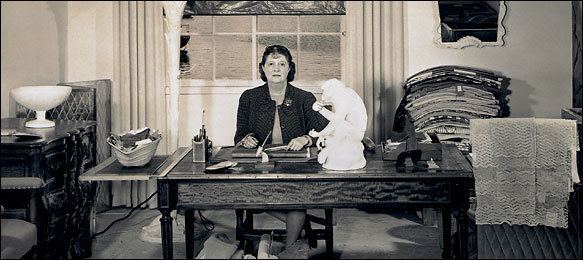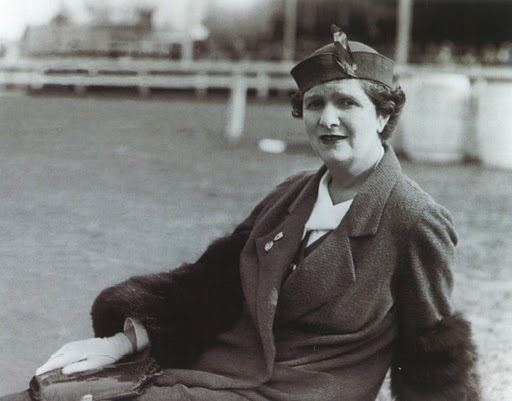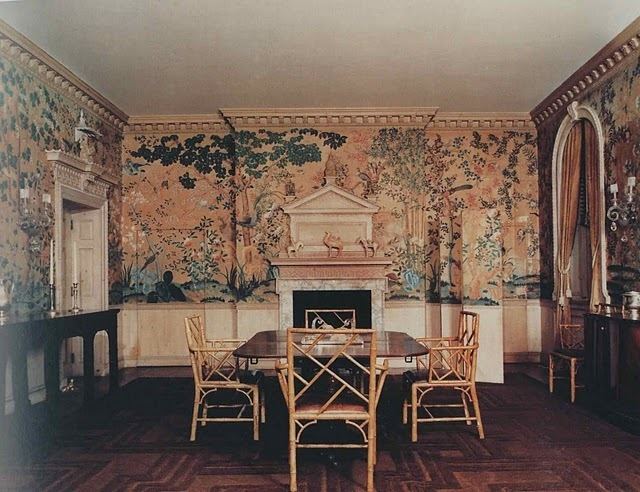Name Frances Elkins | Siblings David Adler | |
 | ||
Died August 26, 1953, San Francisco, California, United States | ||
Frances Adler Elkins (7 November 1888 – 26 August 1953), was one of the twentieth century's most prominent female designers. She was the sister of architect David Adler. Elkins has been called “the first great California decorator.” According to The New York Times Elkins "pioneered vibrant interiors, in which solid historical references met effervescent modernist fantasy."
Contents

Early life

Frances Adler Elkins was born in Milwaukee on November 7, 1888. Her father was a prosperous clothing manufacturer. Elkins was the younger sister of the renowned architect David Adler.

Elkins did not go to college, but when Adler studied architecture at the Ecole des Beaux-Arts in Paris (1908-1911) Elkins joined him in Europe. The siblings met several avant garde artisans in Europe. Elkins was particularly drawn to the work of designer Jean-Michel Frank and sculptor Alberto Giacometti. Elkins collaborated with the two artists, making suggestions for some of Frank's leather furniture and Giacometti's handcrafted plaster lamps.

In 1917, Elkins was married wealthy polo player, Felton Broomall Elkins. A 1911 New York Times article estimated that Felton Elkins had inherited $2 million (the equivalent of $47 million in 2013) from his family in Philadelphia. The couple had three children together: Frances Adler Elkins, Katherine F. Elkins Boyd and Charles W. Elkins. They moved to Monterey, CA in 1918 and soon divorced.
Career
After the divorce, Elkins supported their children by decorating houses for friends and then hotels, clubs and stores. Her first clients were Pebble Beach socialites.
Among her earliest projects was Hester Griffin's Monterrey Colonial house. The house was designed by George Washington Smith. In the living room, Elkins combined traditional elements such as Chippendale furniture, Queen Anne mirrors, and Ming screens with modern lamps by Jean-Michel Frank and Salvador Dalí. Griffin raved over the new living room.
In 1930, Elkins designed the clubhouse of the Cypress Point Club in shades of beige, yellow and melon. The furniture included overstuffed sofas and a large French provincial antique table.
By the early 1930s her reputation spread to San Francisco, where she was anointed the decorator of choice for the city's most prominent families. In San Francisco, Elkins frequently collaborated with modernist architect Gardner Dailey.
Elkins collaborated with David Adler on about 15 houses in California, Illinois, and elsewhere. Elkins always added an unexpected element or two into her brother’s formal interior architecture. Examples include steel inlaid into an ebonized oak floor or Steuben glass moldings around a mantle piece.
One Adler/Elkins collaboration was the Kersey Coates Reed House in Lake Forest, IL. Homeowner Helen Shedd Reed's one instruction was "Don't let us make this a stuffy house." Elkins was the decorator on the project. She collected parquet flooring for the home from a château owned by Comtesse duBarry, lined the library walls with goat skin leather; and covered the guest suite’s walls with Chinese silk. Interior designer Mark Hampton described the library as "the most boldly stylish room I have ever seen in this country." Reed had a high regard for Elkins's taste, living nearly fifty years in her house without altering it. The Kersey Coates Reed House is listed in the National Register of Historic Places.
Elkins was at one point, the sole US distributor for Jean-Michel Frank's Art Deco furniture.
Furniture design
Inspired by 18th-century chairs once owned by the founder of the English magazine Country Life, Elkins designed what is today known as the Loop Chair. Elkins made only eight Loop chairs. Four went to the Wheeler family in Chicago and four went to Marshall Field's house on Long Island. In her book In with the Old: Classic Decor from A to Z, Jennifer Boles called Loop chairs " One of the more popular conversational chairs..." Reproductions are available today.
Elkins also designed the Spider chair. The Spider chair combined Queen Anne-style legs with a Spanish-style shield back. Reproductions of this chair are also available today.
Style
Elkins combined traditional and contemporary styles. She favored Steuben moldings around fireplaces, lacquered tables by Jean-Michel Frank, and sconces that Alberto Giacometti modeled after human hands. She was also partial to French provincial furniture.
Elkins often mixed whites, yellows, and blues in the rooms she designed, but the only flowers she allowed were pink and red carnations.
She was one of the first decorators to use all mirrored walls in bathrooms.
Casa Amesti
Prior to the divorce, Elkins and her husband purchased Casa Amesti (also known as Jose Amesti Casa), a historic adobe house in Monterrey. Casa Amesti was first built in 1833 as a one story house. Over the next 20 years the house grew wider and taller as Jose Amesti's fortunes improved. The house cost $5,000 in 1918. Elkins welcomed the challenge of restoring the crumbling 1830s building.
Casa Amesti was Elkins and Adler's first large scale collaboration. Adler installed all of the modern convinces of the age and added details that would enhance the historic architecture. Adler juxtaposed a newly added classical features such as dentil cornices and fluted door casings against the house's rustic adobe walls and wide-planked ceilings.
Elkins filled the rooms with French and English antiques, American rugs, and chinoiserie. Her eclectic taste included 18th century Spanish portraits, Italian landscapes, a Matisse drawing and a Parisian Walter Gay interior. In 1924, House Beautiful called Casa Amesti "the finest of the restored old adobes."
Elkins lived in Casa Amesti for the next thirty-five years and she continued to add antique and Moderne pieces.
In 1954, Casa Amesti became part of the National Trust for Historic Properties.
In 2010, Thomas Jayne included Casa Amesti in his book The Finest Rooms In America: 50 Influential Interiors from the 18th Century to the Present.
Located at 516 Polk Street in Monterrey, CA, Casa Amesti is currently a private men's club. Many of the rooms remain exactly as Elkins left them.
Later life
Elkins's last commission was a house for Irma and Albert Schlesinger, parents of Nan Kemper. The house as constructed in 1951 with architect Gardner Dailey.
Elkins died at age 64 in San Francisco on August 26, 1953.
